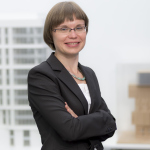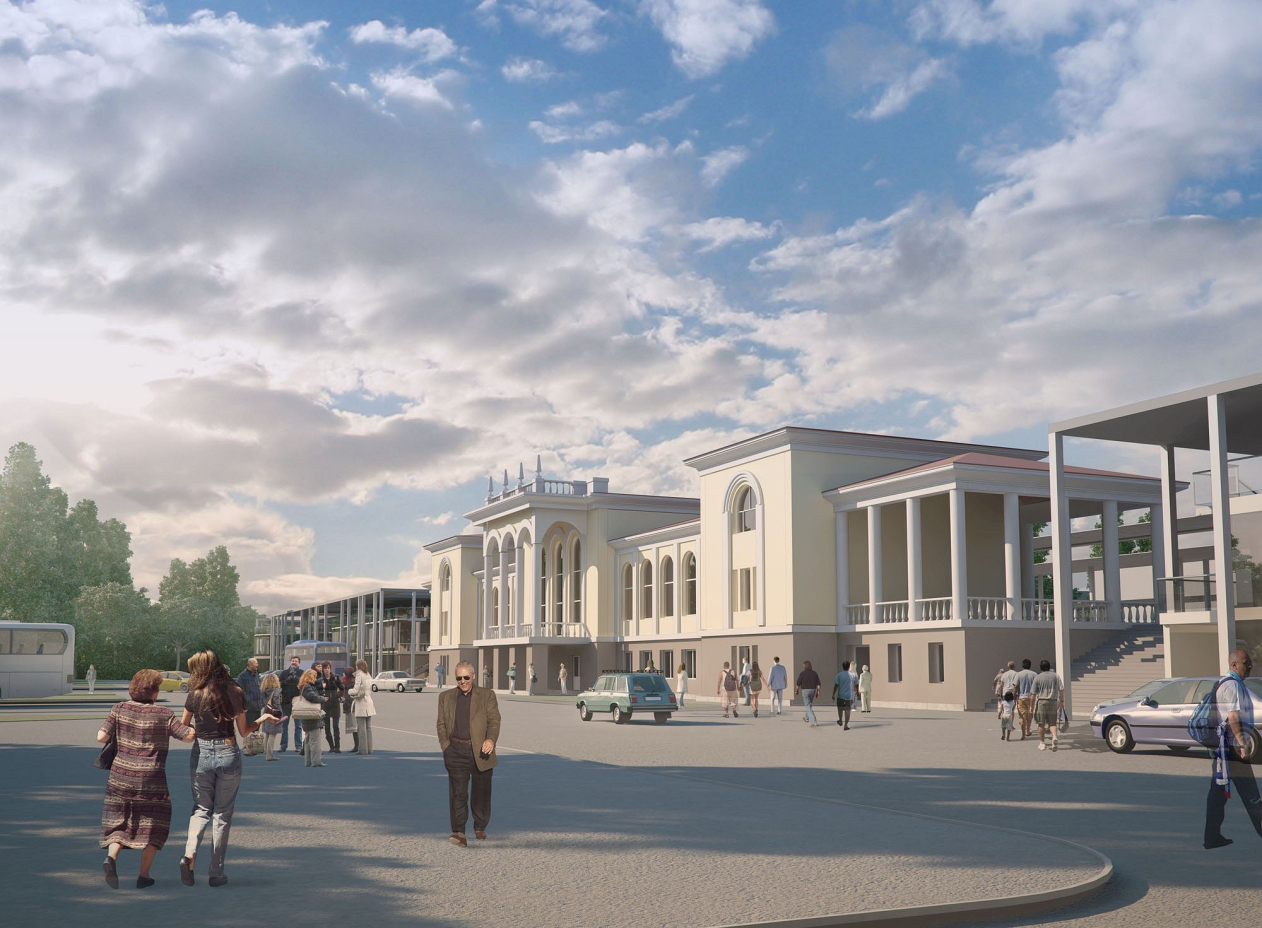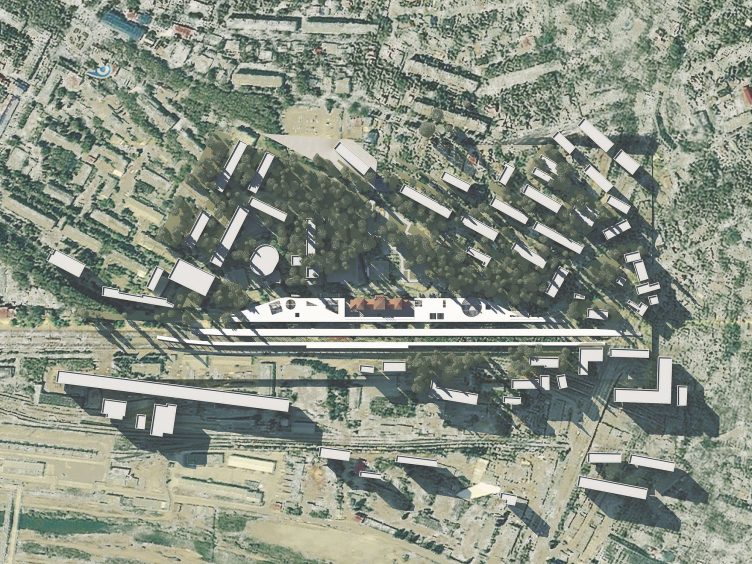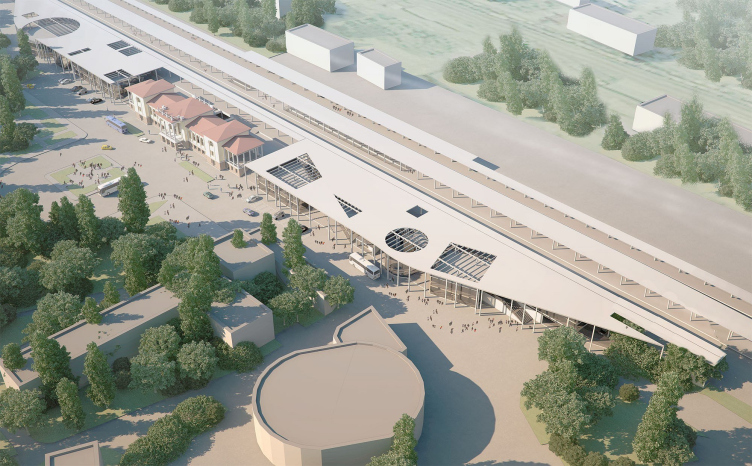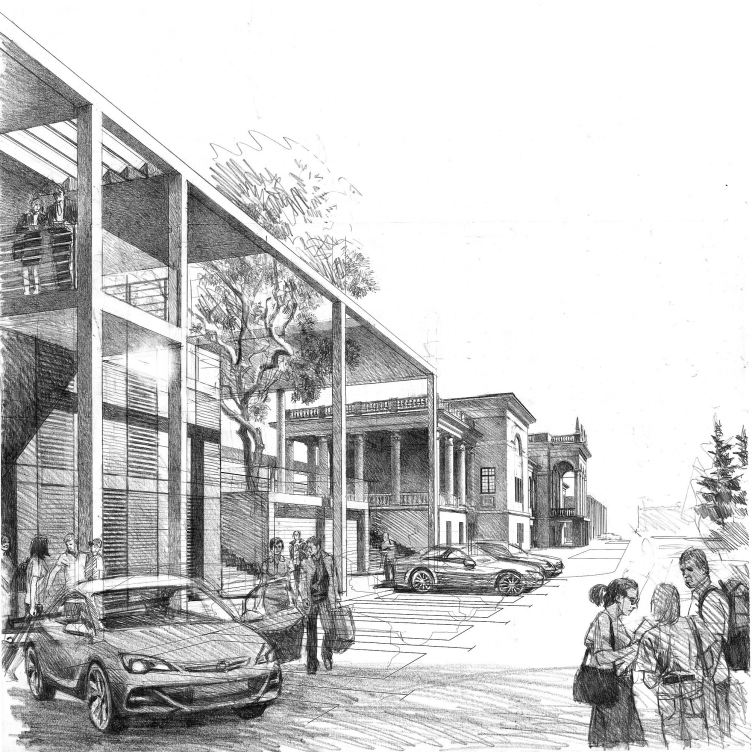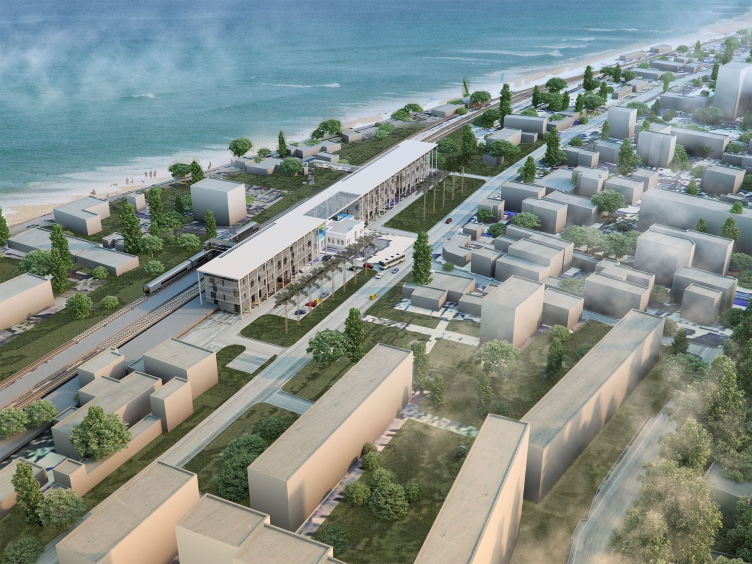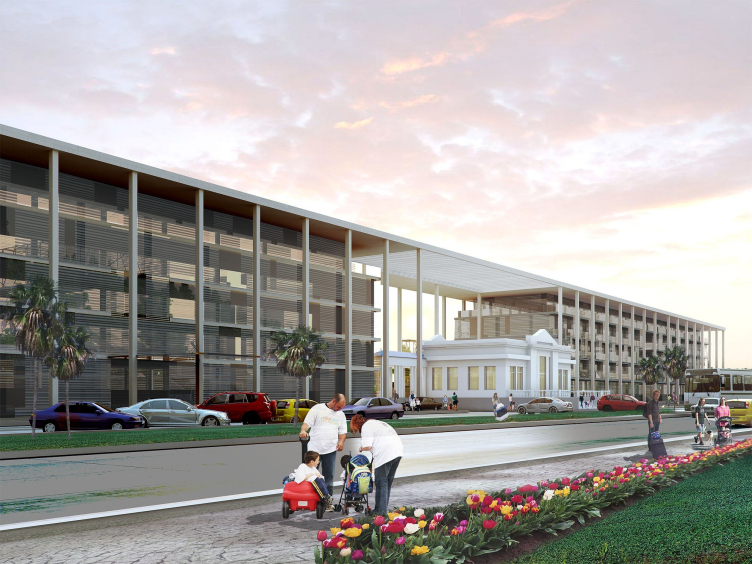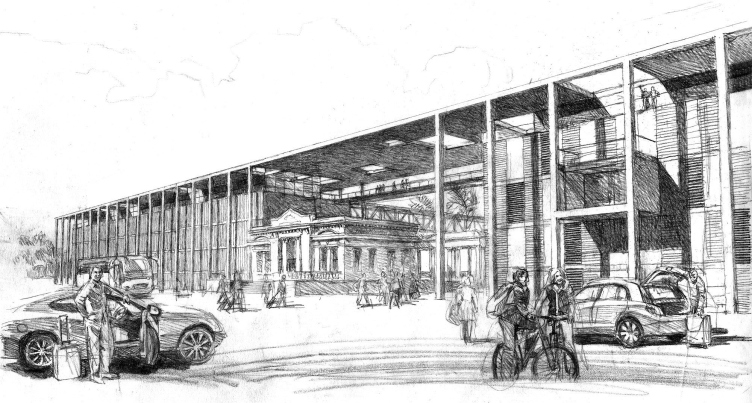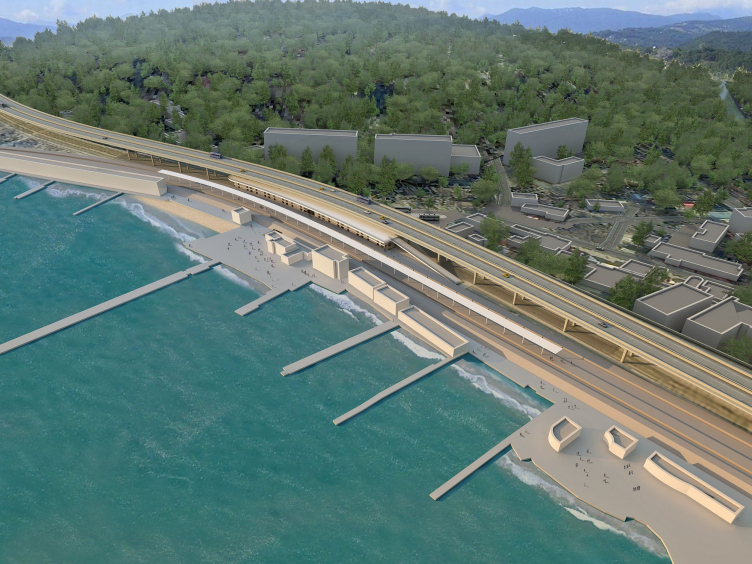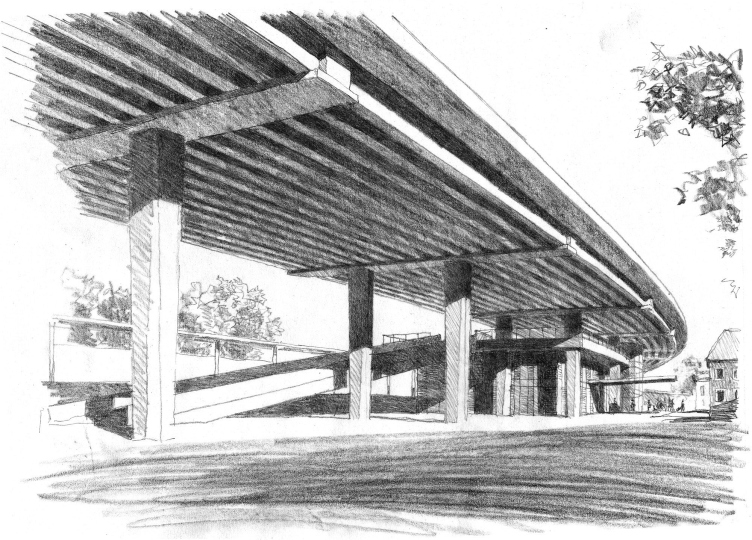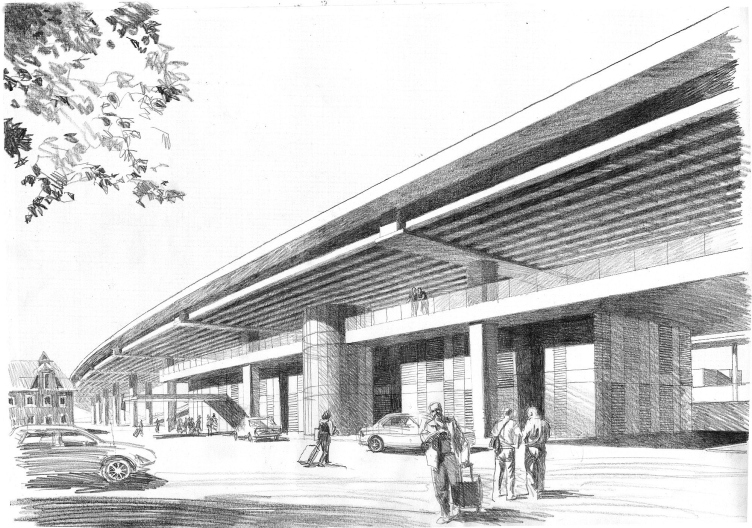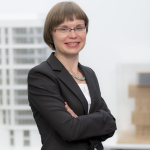The most
large-scale project of all was developed for the city of
On either
side (left and right) the historical building will be flanked with new
"wings" - two groups of buildings stretched along the railway lines. In
these buildings, there will be shops, restaurants, Internet cafes, and leisure
and service institutions that the architects propose to disperse over several low-rise
volumes rather than try to squeeze them into one bulky building. Spaced out
with picturesque pedestrian passways, these pavilions will form a kind of "shopping
quarters" with a comfortable human-friendly medium. All the shops and
cafes will be placed on one single stlylobate stretching from the landside area
down to the passenger platforms. The architects are deliberately leveling off
the upper marks of the stlylobate with the platforms - this will give them the
opportunity to make enough parking places in the basement. The passenger
platforms, in turn, will be equipped with sun and rain-protecting awnings that
will also visually "pull" the various volumes together into one
uniform composition.
The
building of Lazarevskoe railway station, on the other side, is not an
architectural monument but the architects still render homage to its architecture
and its charm. Deciding to keep the building virtually intact, the architects
based the renovation project of Lazarevskoe train station on the idea of an old
picture set in a new frame. The structure of the new train station facility
looks indeed a lot like a frame: like in the previous case, two buildings are
situated on the sides of the historical building, linked to one another with
one common roof that hangs like an awning above the old station and part of the
landside area.
Yet another
planning scenario was prepared by "Studio 44" for the settlement of
Khosta. The thing is that the railroad station of this settlement is situated
in the dead end of
